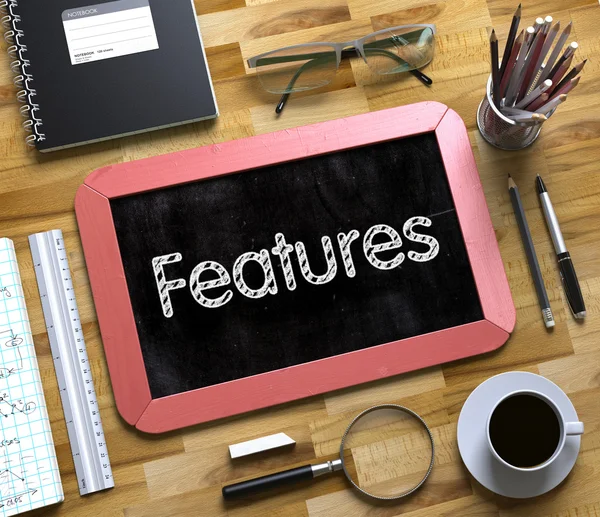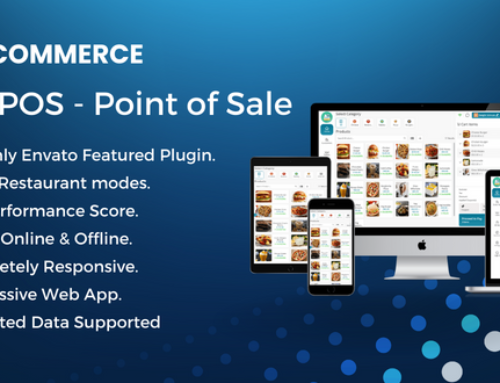The way organizations manage their people resources is revolutionized by HRM (people Resource Management), a cutting-edge technology that is incredibly adaptive. This powerful solution, which was created using PHP and the CodeIgniter framework, is specifically made to simplify office administration and improve the effective handling of all elements of employee management inside a business.
The intricacies of HR operations are made simpler by HRM’s user-friendly interface and current, responsive design. This comprehensive system includes a wide range of features, allowing organizations to successfully manage employee data, track attendance, manage leave, process payroll, conduct performance assessments, and much more. HRM allows organizations to streamline their procedures and boost overall productivity by centralizing these crucial HR functions onto a single platform. This eliminates the need for various separate systems and manual paperwork.
The strength of HRM resides in its capacity to offer businesses an integrated and user-friendly HR management solution. The broad range of tools and functions that HRM offers, from employee onboarding to performance monitoring and payroll management, cater to the many demands of contemporary HR departments. HRM automates common procedures, enhances data accuracy, and simplifies complex HR operations with its user-friendly interface. In turn, this enables HR professionals to concentrate on strategic efforts like hiring talent, promoting employee development, and creating a good work environment.
Features
Home Page:
Access a centralized dashboard that offers a summary of important HR data and rapid access to key functions, enabling users to move about the HR system with efficiency.
History of Attendance:
View a thorough breakdown of an employee’s attendance history, complete with dates, clock-in and out timings, and any pertinent notes or observations that give you a full understanding of attendance trends.
Declare Attendance:
Touchless QR Code Based: For employee attendance management, use a touchless QR code system that allows employees to effortlessly clock in and out using their cellphones and other designated devices, supporting a hygienic and effective attendance tracking process.
Requesting Leave:
Allowing employees to submit leave requests via the HR system with the ability to define the dates, justification, and any necessary supporting materials can streamline the leave management process for both employees and HR staff.
Notice Board:
Access the HR system’s interactive notice board to share significant announcements, business updates, policy changes, and other pertinent information with staff members. This promotes effective communication and provides quick access to key communications.
Ledger History:
Examine a thorough ledger history that records financial transactions pertaining to employee pay, benefits, deductions, and other financial elements, offering transparency and precise financial record-keeping.
Accounting Software:
There are several sections in this module. First, there is a chart of account sections in the accounting system. In addition, this part includes items like liabilities, expenses, income, and equity. Additionally, you can modify your behavior by using the section on balance adjustment. The cash and bank adjustments can both be changed in the same manner. Additionally, you can use this area to choose the parent type.
- Chart of account – Maintain a complete list of financial accounts to organize and categorize system financial data.
- Balance adjustment – Correct account balance inconsistencies and inaccuracies to ensure accurate financial reporting.
- Cash adjustment – To manage and reconcile cash activities, make cash adjustments for deposits, withdrawals, and transfers.
- Types of payment – Define and manage the organization’s payment options, such as cash, credit cards, cheques, and electronic transfers, to make payment processing flexible and convenient.
- Different kinds of vouchers – Use payment, receipt, journal, and expenditure vouchers to record and track specific financial transactions in the system.
- Overall account report – Provide stakeholders with detailed reports on the company’s financial statements, including balances, transactions, and other information.
Asset Management:
You can add your company’s assets by using this module. You can also add equipment.
The employee who will be responsible for allocating the assets will then be your choice. Additionally, it is simple and accurate for you to comprehend the return asset and return list. Below are some of this module’s sections:
- Add new type of asset – Create new asset classes in the system to accurately categorize and track company assets including computers, automobiles, and machinery.
- Add new equipment – Enter equipment name, description, specs, and acquisition information to properly manage inventories and track assets.
- Assign asset – Assign assets to employees or authorized individuals and track asset ownership and allocation.
- Check return information – Access complete asset return information, including return dates, condition assessment, maintenance or repair histories, expenditures, and measures performed, for effective asset return management and tracking.
Employee Attendance:
You can easily and effectively manage the entire attendance system with the help of this module. You might be able to view each employee’s monthly attendance record here.The missing attendance feature also allows you to locate the absent employee on any day. Additionally, you can view the whole date-wise attendance as well as the specific attendance data for each employee using this module.
- Generate attendance form – Make a unique form that employees can use to track their daily attendance.
- Monthly attendance report – Create a report that includes an employee attendance summary for a given month.
- Missing attendance report – Identify and draw attention to any instances when attendance records are missing or incomplete.
- Overall attendance Log – Access a list of the attendance records of the employees throughout various time frames.
Best Employee Award:
Through the utilization of this module, you will be able to manage the reward system. In addition, with the assistance of this module, you will have the ability to both create new awards and administer existing awards.
With the aid of this module, you can also manage awards and add new ones.
- Add new award – To recognize and reward achievement, you may quickly design and add new awards to the system.
- Manage award information – Update and manage award-related data, such as names, requirements, recipients, and dates, with efficiency.
The complete process for hiring employees:
This module assists you in carrying out the hiring process quickly and efficiently. You can update this section with new candidate data. Additionally, you can control every candidate data. On the other side, you can control the data that was shortlisted. Additionally, you might be able to use this module to control the interview and selection.
- Candidate information system – For efficient hiring and personnel management, keep a thorough database of candidate data that includes resumes, credentials, and contact information.
- Candidate shortlist information – During the hiring process, keep track of the shortlisted candidates’ credentials, interview feedback, and role fit.
- Interview managing system – Use the system to manage interview schedules, candidate correspondence, and interviewer feedback.
- Candidate selection system – Facilitate the hiring process by assessing the qualities of candidates, their performance during interviews, and other factors.
Loan System:
You are able to manage anything and everything having to do with loans by utilizing the module. You are able to add new loans as well as loans that have already been approved. Additionally, you can control loan payments here. In this module, you can view the complete loan report.
- Grant loan system – Create a system for awarding loans to employees that include specifying loan categories, sums, interest rates, and repayment conditions.
- Loan installment system – Track loan payments, compute interest, and create payment schedules to control loan repayment.
- Loan report – Produce reports that include a summary of loan activities, balances owed, and repayment progress.
Employee Leave System:
You can manage each application for leave in this module. You can also add a departure type. Additionally, you are able to plan for both weekly and annual holidays.
- Manage holiday – To manage and keep track of company-wide holidays and observances, keep a central holiday calendar.
- Manage weekly holiday – Take regional or organizational needs into account while defining and managing weekly holidays.
- Manage leave application – Provide staff with an easy-to-use interface so they can submit leave requests with dates, justifications, and supporting materials, streamlining the leave application process.
Notification System:
A notification mechanism is available in this software. A noticeboard module is present. With the help of this module, you will be able to create and administer a wide variety of notices pertaining to your employee.
- Notice board system – Use a system-wide digital notice board to notify staff of significant announcements, policy changes, and other relevant information.
System for Payroll:
You may keep track of the actions associated with your employee’s salary using this module.Additionally, you have the ability to add and manage salaries, in addition to configuring the different types of salaries.
- Salary type set up system – Set up fixed, hourly, and commission-based salary structures to meet employee compensation needs.
- Salary set up system – Based on organizational policies and employee agreements, easily define and customize salary components including basic salary, allowances, deductions, and bonuses.
- Employee salary management system – Manage employee salaries efficiently, including calculations, revisions, and timely disbursements.
The Tax System:
You will be able to ensure that the tax system is functioning correctly if you make use of this module.This module makes it easier for you to handle and calculate taxes automatically.
- Manage tax – To calculate taxes accurately and comply with tax laws, set up and manage tax-related information such tax rates, deductions, and exemptions.
System for Role Permissions:
The amount of work that you have to do can be cut down with the help of this module. Therefore, with this module, you are able to delegate tasks. First, you will need to create the role, and then you will be able to assign that job to any particular user. The task can only be completed by individuals who have been given the assignment.
- Create a new role – To successfully manage user roles and access rights, create and define new system roles with permissions, access levels, and responsibilities.
- Manage role list – Maintain a complete list of roles for simple management and user assignment to ensure control of access and security.
Automated Reports:
You can receive all reports precisely and automatically with the help of this module. This module aids in the daily and monthly generation of reports.
- Attendance report – To monitor and analyze employee attendance, generate thorough reports on attendance patterns, late arrivals, early departures, and total attendance statistics.
- Leave report – Generate complete reports on employee leave information, including leave balances, kinds of leave taken, and leave patterns, for precise leave monitoring and management.
- Employee report – Access complete reports with employee data, including personal information, employment history, evaluations of performance, and other pertinent data, to make informed decisions and manage HR.
- Ad Hoc report – Customize reports for ad-hoc data analysis, visualization, and reporting based on user-defined criteria and filters.








